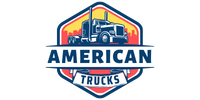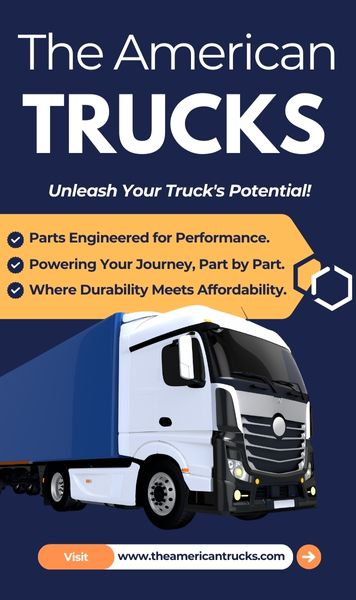
When it comes to optimizing your truck’s performance and ensuring a smooth ride, shock absorbers play an irreplaceable role. If you’ve ever felt your truck bouncing uncontrollably after hitting a bump, it’s a clear sign that your shock absorbers may need an upgrade. In this comprehensive guide, we’ll explore everything you need to know about shock absorbers for trucks — from how they work to choosing the best ones for your specific needs.
What Are Shock Absorbers?
Shock absorbers are crucial components of your truck’s suspension system. Their primary function is to control the movement of the suspension, ensuring your tires maintain consistent contact with the road. Without them, your truck would bounce uncontrollably, compromising safety and comfort.
In simple terms, shock absorbers:
- Reduce the impact of road irregularities
- Improve ride comfort
- Enhance vehicle stability
- Extend tire and suspension life
Why Are Shock Absorbers Important for Trucks?
Trucks are often used for heavy-duty tasks—towing, hauling, or off-roading—which puts immense stress on the suspension system. High-quality shock absorbers ensure:
- Stability While Towing: They minimize sway and keep the load stable.
- Off-Road Control: Absorbers designed for off-road use handle rough terrains effortlessly.
- Ride Comfort: Even with a heavy load, good shocks make your ride smoother.
- Extended Vehicle Life: By reducing wear and tear on other suspension components.
Signs Your Truck Needs New Shock Absorbers
Ignoring worn-out shock absorber can lead to poor handling and even safety hazards. Look out for these warning signs:
- Bumpy Rides: Increased vibrations or rough rides.
- Nose Dives While Braking: Front end dips more than usual.
- Excessive Body Roll: Especially noticeable when turning.
- Uneven Tire Wear: Poor shock absorption can lead to irregular tire wear.
- Leaking Fluid: Visible oil on the shock body indicates failure.
Types of Shock Absorbers for Trucks
Understanding the types of shock absorber available can help you make an informed decision.
1. Twin-Tube Shocks
- Best For: Daily driving and light hauling.
- Benefits: Affordable, easy to replace.
2. Monotube Shocks
- Best For: Off-roading and heavy-duty use.
- Benefits: Better heat dissipation, consistent performance.
3. Gas-Charged Shocks
- Best For: High-performance needs.
- Benefits: Reduced aeration, improved handling.
4. Reservoir Shocks
- Best For: Extreme off-roading.
- Benefits: Additional oil capacity, superior cooling.
How to Choose the Best Shock Absorbers for Your Truck
Selecting the right shock absorber depends on several factors:
- Driving Habits: Are you primarily on highways or off-road trails?
- Load Requirements: Do you frequently tow or haul heavy loads?
- Budget: Premium shocks offer more features but come at a higher price.
- Brand Reputation: Opt for trusted brands known for durability and performance.
Top Shock Absorber Brands for Trucks
When investing in new shocks, brand reliability matters. Here are some top choices:
- Bilstein: Known for high-performance monotube shocks.
- Rancho: Popular among off-road enthusiasts.
- KYB: Offers a wide range of options for various needs.
- Fox Racing Shox: Excellent for extreme off-roading.
- Monroe: A trusted name for daily driving solutions.
DIY: How to Replace Shock Absorbers on a Truck
If you’re handy with tools, replacing shock absorber can be a rewarding DIY project.
Tools You’ll Need:
- Jack and jack stands
- Socket set
- Penetrating oil
- Torque wrench
Steps:
- Lift the Truck: Securely lift and support the truck.
- Remove Old Shocks: Unbolt and carefully remove the worn shocks.
- Install New Shocks: Position and bolt the new shocks in place.
- Torque Bolts: Use a torque wrench to tighten bolts to manufacturer specs.
- Test Drive: Ensure the new shocks perform as expected.
Maintenance Tips for Long-Lasting Shock Absorbers
Maximize the lifespan of your new shock absorber with these tips:
- Regular Inspections: Check for leaks and wear every 12,000 miles.
- Clean Shocks: Remove dirt and debris that can cause premature wear.
- Check Suspension Components: Worn parts can affect shock performance.
- Avoid Overloading: Stick to your truck’s weight limits.
Final Thoughts
Investing in high-quality shock absorbers isn’t just about comfort—it’s about safety and performance. Whether you’re cruising on highways or tackling rugged terrains, the right shocks will make a noticeable difference. Evaluate your needs, choose the best type, and enjoy the enhanced ride quality your truck deserves.
Ready to upgrade your truck’s performance? Explore the best shock absorbers today and feel the difference on your next drive
Check out our articles Shock Absorbers




